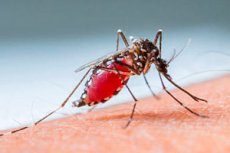
NDORMS 的研究人员与国际机构合作,展示了利用环境测量和深度学习模型预测南亚疟疾疫情的潜力。这项研究为改善世界上最致命疾病之一的早期预警系统带来了令人鼓舞的前景。
疟疾仍然是全球重大的健康问题,全球约有一半人口面临感染风险,尤其是在非洲和南亚。虽然疟疾可以预防,但气候、社会人口和环境风险因素的多变性使得预测疫情变得困难。
由牛津大学 NDORMS 行星健康信息学小组副教授 Sarah Khalid 领导的研究小组与拉合尔管理科学大学合作,试图解决这一问题,并研究基于环境的机器学习方法是否可以为特定地点的疟疾预警工具提供潜力。
他们开发了一个多元 LSTM(M-LSTM)模型,同时分析温度、降雨量、植被测量值和夜间灯光数据等环境指标,以预测横跨巴基斯坦、印度和孟加拉国的南亚地带的疟疾发病率。
这些数据与 2000 年至 2017 年间每个国家地区级疟疾发病率进行了比较,这些数据来自美国国际开发署的人口与健康调查数据集。
发表在《柳叶刀星球健康》杂志上的研究结果表明,所提出的 M-LSTM 模型始终优于传统的 LSTM 模型,对巴基斯坦、印度和孟加拉国的误差分别降低了 94.5%、99.7% 和 99.8%。
总体而言,随着模型复杂度的增加,准确度更高、误差更少,凸显了该方法的有效性。
莎拉解释说:“这种方法具有普适性,因此我们的模型对公共卫生政策具有重要意义。例如,它可以应用于其他传染病,或扩展到世界卫生组织非洲区域内疟疾发病率和死亡率异常高的其他高风险地区。它可以帮助决策者采取更积极的措施,尽早、准确地管理疟疾疫情。”
真正的吸引力在于,得益于地球观测、深度学习和人工智能的快速发展,以及高性能计算机的普及,我们几乎可以在地球上的任何地方进行分析。这将有助于在持续的消灭疟疾和改善全球公共卫生状况的努力中,采取更有针对性的干预措施,并更好地分配资源。

